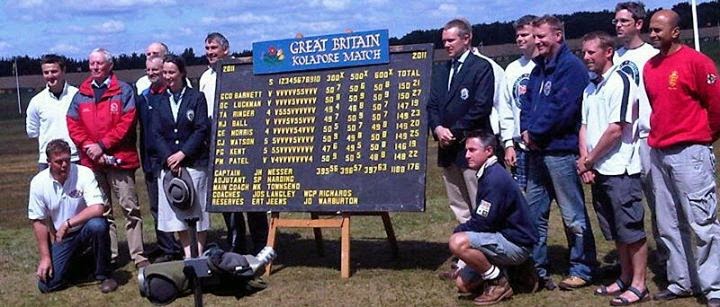One possibility came to me over the weekend while I was sanding and varnishing the front doorframe, which leaves my hands pleasantly occupied while allowing my mind time to think of other things. My idea was to establish my natural point of aim (NPA) and then shoot on a SCATT with my eyes closed to verify that I was actually shooting at the NPA and to allow me to focus on feeling my position rather than relying on a visual verification. Having given this some thought, the next thing to do was to set up the experiment.
Experimental Theory and Conditions
I decided that I would fire two sighters and then 10 shot group* under normal conditions to act as a control. I would then fire a second pair of sighters under normal conditions to re-establish my NPA and then fire a second 10 shot group, except that I would have my eyes closed from the start of the exhale phase through to shot release**. The core hypothesis of the experiment being that were my natual point of aim to coincide with the target with my eyes open, it should also correspond with the target with my eyes closed. Any deviation in the mean point of impact (MPI) for the two groups should be within the standard error of the MPI, otherwise my my NPA would clearly not be "natural".
To try and eliminate calibration and other errors, I fired the two sets of sighters and groups without breaking position. In this case I fired the normal group first, but when I rerun the experiment I'll shoot first with my eyes closed to eliminate order as a confounding effect. Also, I'll try control shoots where I keep eyes open for both shoots and closed for both shoots.
Results
As is clear from the two diagrams shown below, I need to work on my NPA! There is a difference of about 0.75moa horizontally and 0.75moa vertically between the two groups. I've not yet run the maths, but I think that when I do I'll find that the difference in zeroes is greater than the standard error of the group size.
 |
| Yes, I know. I used two slightly different targets by mistake. Damn. |
Conclusions and Next Steps
While the result isn't quite as I had hoped, much more important is that I know have further knowledge about my shooting; information backed by data upon which I can act. The key actions I now know I need to take are: to repeat the experiment, to check that this is not simply the result of experimental error; but also to monitor improvement as I work on this aspect of my shooting.
Addendum; I hadn't really noticed that the eyes closed shoot had a much better shot release number. Now this could be because I was wobbling a bit less because I wasn'y unconsciously holding the rifle off the NPA, or it could just be chance. I'll have to do this a few more times to distinguish between the two possibilities.
* Yes, I know I should really be firing more shots that this (at least 30 to have some statistical validity) but it was the first time I tried the experiment and I'll repeat it a few
** My final shot sequence goes: Confirm NPA, breath in, breathe out to natural respiratory pause, confirm centering, take first stage, squeeze, bang, follow-through.
